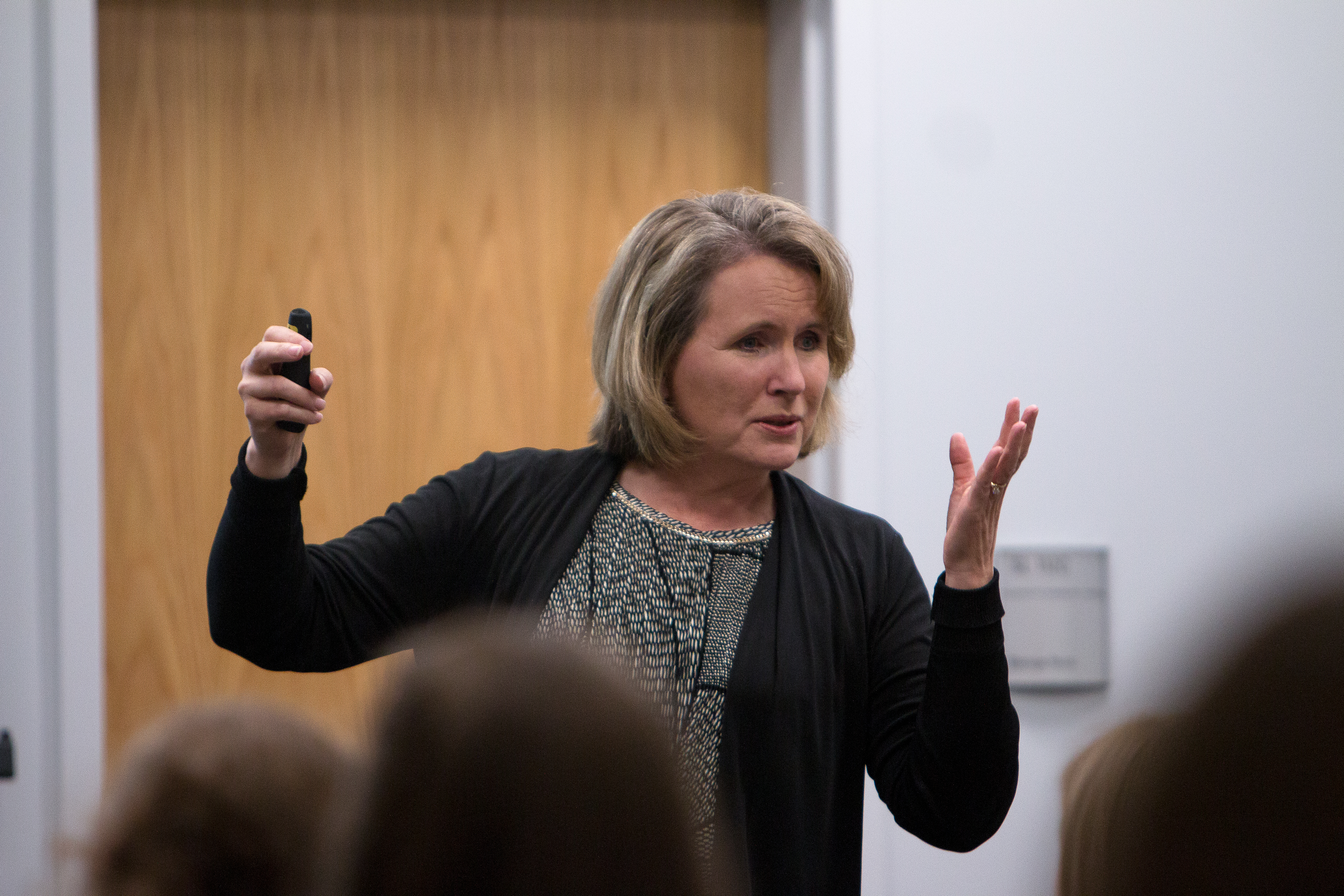
See also Computer Science Department’s Women Initiative seeks to foster inclusiveness
Spring Cullen is passionate about her education at BYU. She loves her field. She loves overcoming its challenges and finds satisfaction in a job well done. She loves to learn and research. Beyond graduation, Cullen has goals to teach and instill her passion in others.
Like hundreds of thousands of BYU students before her, Cullen has found her passion. Still, she is an anomaly; she is planning to work in computer science — a rarity in a largely male-dominated field.
According to research done by the Utah Department of Workforce Services, men in Utah dominate in fields such as computers and mathematics, architecture, engineering and management and others. By contrast, women dominate in fields such as personal care and service, education and office and administrative support — all lower-paying jobs than the male-dominated fields.
Cullen said she doesn’t let the small number of women in her program get her down.
“As the classes get higher up, there’s less females in the classes,” she said. “At first, that was hard because you’ll walk into a room, and you’ll see that you’re the only girl there. But to be honest, it’s not a big deal. Most of it’s all, in your head. Once you realize no one else really cares, and they’re not focusing on that, then it’s normal.”

Reports have shown Utah ranks last in the nation when it comes to equal pay, and some experts believe the low-pay of women-dominated jobs contributes heavily to the issue. According to Susan Madsen, founder of the Utah Women and Leadership Project, the wage gap is largely due to the culture in the state.
“Things are changing, but (people) still go down to their biases, and that is that women should be teachers or social workers or nurses,” Madsen said. “They’re really not open to the STEM fields, or even business.”
Robbyn Scribner, assistant director of the Utah Women and Leadership Project, added many women don’t know all the options available to them.
“There are a lot of young women who don’t really have a sense of the wide variety of careers that are out there,” Scribner said.
Scribner added these numbers add to the poverty rates among Utah women.
“We have so many women living in poverty in the state,” she said. “This is due partly to the fact that too many girls were taught they didn’t need to get an education or prepare for a career. As we work to find ways to support women at work, they are better prepared to support their families and contribute to their communities.”
These stereotypes are reflected in the educational pursuits of many BYU students. Of the 1,144 undergraduate students in the David O. McKay School of Education, only 37 are male — a mere 3%. This is even more skewed than the state average where educators are 71% female.
The number of undergraduate students in BYU’s computer science program are equally telling: of the 1,115 computer science majors at BYU, only 158 are female — a mere 14% of computer science majors.
Christoffer Loderup is a student in the BYU School of Family Life, another female-dominated major at BYU. According to statistics from the School of Family Life, only 10% of the school’s students are male. Loderup believes there are multiple factors behind the lack of men in his program.
“The stereotype is that men are logical and women are emotional,” he said. “When men are shown as emotional, they’re portrayed as weak.”
Loderup also listed societal pressures and concerns about a job’s salary as reasons men shy away from female-dominated majors. He admitted he has felt judged at times for choosing the School of Family Life.
“It’s not a blunt, direct, ‘What are you doing with your life,’ but that’s the implied message that I get, just from body language,” he said. “Most people don’t know exactly what to say.”
Scribner said children start internalizing these stereotypes at an early age.
“It’s a complicated issue,” she said. “We know that at early ages, girls and boys are equally interested in math; they’re equally interested in science. But once they start hitting the end years of elementary school and the early years of junior high, that starts to shift a little bit. Boys are being raised with the mindset that they will need to provide for a family — they’re going to have to choose a career that’s going to pay well. Girls are being taught that whatever they’re going to do is just going to be an add-on.”
Madsen believes if more women enter leadership roles in both politics and business, Utah’s work environment will become more inclusive.
“We have to raise our aspirations as women to want to lead,” Madsen said.
Scribner added that although Utah is making progress, the state still has a long way to go.
“Especially with social change, the needle moves slowly,” she said. “We recognize as we see progress, we will count those as wins, but we know that deeper, lasting change is going to take some time. We just have to keep moving forward and doing our best.”




